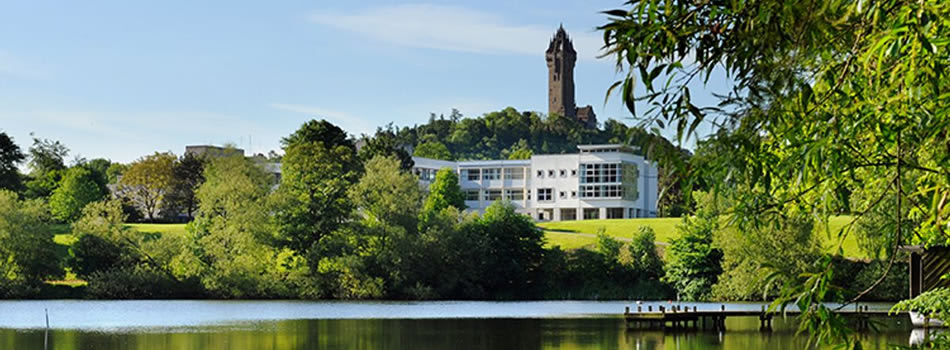Prof A N Tyler, Dr E Spyrakos, Prof M Scott, Dr Georg Umgiesser
No more applications being accepted
Competition Funded PhD Project (UK Students Only)
About the Project
This studentship provides exploits world leading expertise in Earth Observation of optially complex waters with hydrodynamic modelling and complex big data analysis. The candidate will be base at Stirling but is expected to spend time at our partner institutions in the UK and Venice Italy.
This PhD focusses on understanding lagoons, transitional environments that play pivotal roles in global-scale biogeochemical cycles being a nexus between the terrestrial and marine environments and are biodiversity hotspots with high conservation value. As a result, lagoons provide numerous ecosystems services that have tended to result in a long history of human settlement. Lagoons have therefore been subject to multiple conflicting societal demands and environmental pressures, including industrial, agricultural and domestic pollutants, as well as hydrological and morphological modifications. These pressures have been further compounded by the pressures of climate change. Lagoons are highly vulnerable to these natural and man-induced perturbations and may be characterised by having low threshold tipping points. However, our scientific understanding of these complex and dynamic environments is currently constrained by our inability to observe changes in ecosystem structure and functioning and their responses to environmental perturbation. This is a serious concern, as lagoons are likely to be highly sensitive to future environmental changes such as nutrient pollution, global sea level rise, changes in precipitation, storminess and changing patterns of land use. There is a need to establish new approaches for the collection, integration and assimilation of data from disparate sources including in situ monitoring programmes, Earth observation (EO) and couple these with hydrodynamic models for improved our understanding and the confident implementation of conservation and management solutions. This PhD will integrated these approaches to achieve a better understanding of the consequences of these perturbations of two contrasting lagoons in both time (decades, with one year simulations in each morphological configuration) and 3D space (from surface with EO products, and with depth through models, validate by in situ measurements).
To develop a better understanding and implement better management strategies of complex lagoon ecosystems, this PhD brings together state of the art Earth observation (EO) capability building on ESA’s sentinel programme to validate cutting edge hydrodynamic modelling. Together these will allow lagoon systems to be modelled to assess impacts on both past, present and future management scenarios to be evaluated in 3D space and time.
This PhD will focus on two contrasting lagoon systems: (i) the Razelm-Sinoe connected to the Danube and impacted in the 1970s by being artificially isolated from the Black Sea by an engineered sand barrier to transform the lagoon into a freshwater system; and (ii) the Venice lagoon, (UNESCO heritage site of inestimable value) with a deeply entrenched cultural history lasting for more than 1000 years, and probably the most well-known lagoon of the Mediterranean. In contrast to the Razelm, it is a heavily engineered lagoon with strong historical anthropogenic influence.
This PhD brings together three strands of cutting edge research in hydrodynamic modelling, Earth observation and in-situ validation, and data analytics.
Hydrodynamic Modelling: In the two study sites the SHYFEM model (Umgiesser et al., 2004), a finite element hydrodynamic 3D model, will be implemented. SHYFEM was developed at CNR-ISMAR (Venice) to investigate the dynamics in lagoons, coastal seas, estuaries and lakes.
Earth observation: Both Sentinel 2 and 3 along with archived MERIS data will be exploited to reconstruct and monitor change across both systems and in relation to the surrounding marine and freshwater environments. In Venice Lagoon, for example, high resolution Sentinel 2 data will be used to establish the connectivity between the lagoon and Venice itself, the industrial inputs in addition to the Po river and the Mediterranean. The EO data coupled with depth profiles with in-situ radiometers will provide the validation for depth predictions from the SHYFEM model.
Data analytics: Cutting edge tools in environmental data analytics including downscaling, data fusion/linkage and functional data analysis will be investigated and applied for assimilation and fusion of the lagoon hydrodynamic model with the EO and in situ data.
Funding Notes
This is a competition funded PhD studentship as part of the NERC Doctoral Training Partnership IAPETUS2 (View Website). A first class undergraduate degree (or equivalent, typically >70 % or >8 for different grade points systems) and/or MSc with distinction is recommended. Publication of articles, participation in academic conferences and other similar activities will be an advantage. For the successful candidate, the studentship will cover tuition fees and provide a stipend for UK students only (please see NERC funding rules for EU citizens).
References
To Apply: The deadline for applications is Jan 18th 2019 at 16:00. However, serious applicants are strongly advised to get in touch well in advance with Professor Andrew Tyler: a.n.tyler@stir.ac.uk to discuss their application. Informal enquiries are welcome. Applicants must have submitted a formal application through the Stirling University online application system: https://www.stir.ac.uk/research/research-degrees/how-to-apply-for-our-research-degrees/ - Programme Biological and Environmental Sciences by this deadline.
More information: http://www.iapetus.ac.uk & http://www.iapetus.ac.uk/wp-content/uploads/2018/10/IAP2-18-75_Stirling_Tyler.pdf

 Continue with Facebook
Continue with Facebook


